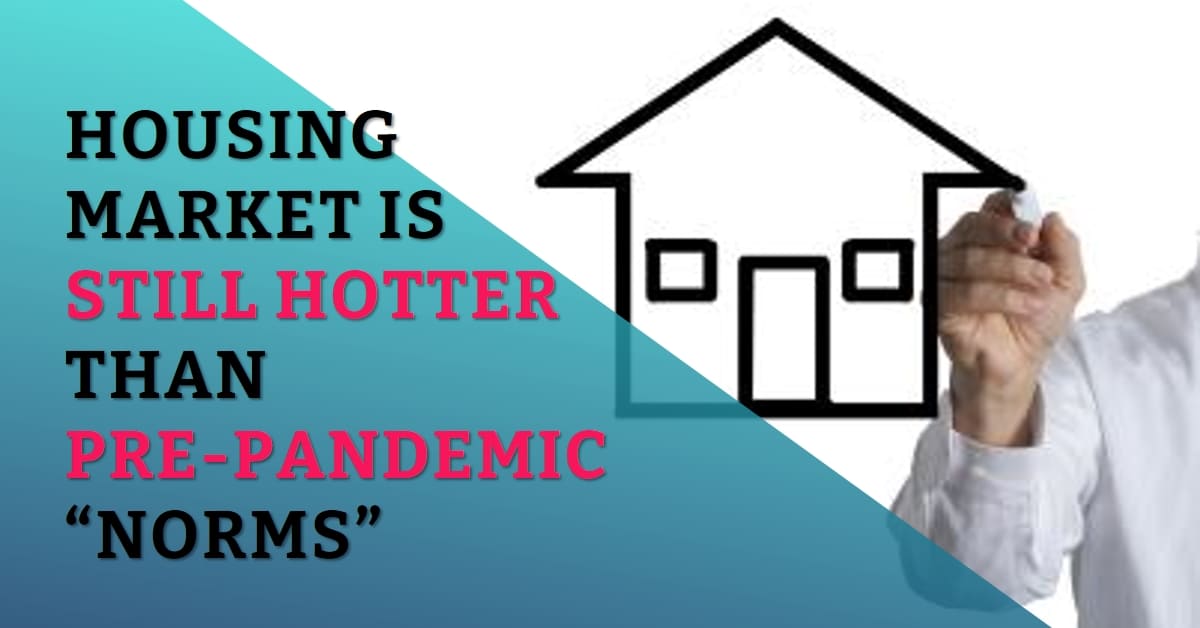Is the housing market still hot? The latest housing market insights from Zillow reveal some intriguing trends. The data suggests a nuanced scenario where buyers experience some relief, homeowners break free from “rate lock,” and the market witnesses both challenges and opportunities. The housing market has seen a notable shift from the demand-driven peaks of the pandemic era.
While competition has cooled from its frenzied heights, the U.S. housing market still remains slightly more intense than pre-pandemic norms. Homes are now moving approximately 50% faster, with more selling at a premium. However, this increased pace comes with fewer choices and higher costs for prospective buyers.
Buyers are benefiting from significant savings due to a decline in mortgage rates from the 23-year highs witnessed in October. Yet, the unpredictability of mortgage rates underscores their pivotal role in determining appreciation and affordability, particularly for first-time buyers, in the upcoming year. Encouragingly, the data indicates that the rate lock is loosening for some homeowners, signaling their readiness to re-enter the market.
Homeowner Sentiments and Selling Trends
A recent Zillow survey sheds light on homeowner sentiments, revealing that 21% are considering selling their homes within the next three years, a notable increase from the previous year's figure of 15%. Interestingly, this inclination to sell is consistent across homeowners with mortgage rates both above and below 5%, marking a shift from the situation six months ago when higher mortgage rates were a more significant factor in the decision to sell.
This evolving trend indicates that more homeowners with lower rates are warming up to the idea of selling, while those with higher rates likely purchased their homes more recently. Consequently, current mortgage rates seem to be less of a determining factor when contemplating a sale.
Home Values: A Mixed Picture
Examining home values in December, the typical home in the US was priced at $344,000, with a typical monthly mortgage payment of $1,790, assuming a 20% down payment. However, the monthly appreciation of home values varied across major metro areas.
- Increased Values: New York (0.2%), Las Vegas (0.1%), Miami (0.1%), Riverside (0%)
- Decreased Values: Minneapolis (-1.1%), New Orleans (-1.1%), Milwaukee (-1.1%), Buffalo (-1.1%), San Antonio (-1%)
On an annual basis, home values are up in 43 of the 50 largest metro areas, with the highest gains in Hartford (11.7%), San Diego (8.4%), Milwaukee (7.9%), Providence (7.9%), and Boston (7.5%). However, seven major metro areas experienced a decrease in home values, with New Orleans (-8.1%) and Austin (-7.2%) witnessing the largest drops.
Notably, the typical mortgage payment has increased by 7.5% from the previous year and a significant 106.5% since the pre-pandemic period.
New Listings and Inventory Dynamics
The market saw a decrease of 30.2% in new listings nationally from November, a typical trend for this time of year. However, compared to the previous year, new listings are up by 2.1%, showcasing improvement from a trough of 35% in April. Despite this positive shift, new listings remain 14.5% below pre-pandemic norms.
Inventory levels in December decreased by 9.7% from the previous month, with a 0.6% increase compared to the previous year. Although this signals a slow but steady recovery from a 45.8% deficit in May, inventory remains 36% lower than pre-pandemic levels. Key markets, such as Las Vegas (-35.2%), Seattle (26.9%), and Sacramento (-25%), witnessed notable year-over-year declines in inventory.
Market Competition and Pricing Dynamics
Despite a cooling market, homes are still going under contract at a pace 50% faster than pre-pandemic norms. The share of homes selling above the list price declined to 29.4% in November, down 2.4 percentage points from the previous month but still higher than pre-pandemic levels.
Price cuts, typically less popular in winter, were present in just under 16% of listings in December, marking the lowest figure since April 2022. Annually, the share of listings with a price cut decreased in 46 of the 50 major markets, indicating a trend toward more competitive pricing strategies.
Rental Market Trends
Shifting focus to the rental market, the typical U.S. rent stands at $1,957, with an annual rent growth of 3.3%, maintaining stability since August. Metros in the Great Lakes, Midwest, and Northeast regions, led by Providence (7.1%), Cincinnati (7.1%), and Hartford (7.1%), experienced the strongest annual rent growth.
In summary, December's Housing Market Report paints a multifaceted picture of a real estate landscape marked by shifting dynamics, evolving homeowner sentiments, and regional variations in home values and rental trends. As we step into 2024, the real estate market appears poised for a blend of challenges and opportunities, emphasizing the importance of staying informed and adaptive in the ever-changing housing landscape.




